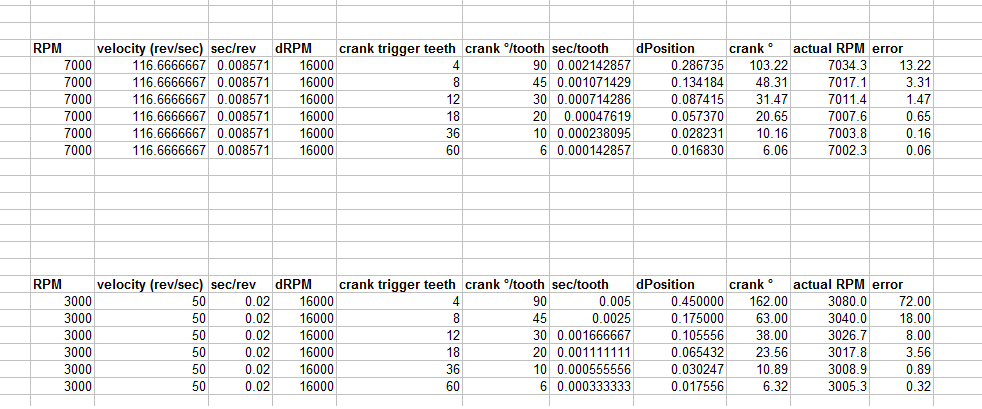| First of all, I was mistaken about questioning whether there was a benefit of having more trigger wheel teeth. Here is the benefit: There is the potential for a timing error due to the RPM accelerating between trigger events. The fewer the trigger teeth, the larger the timing error as shown in the graph below for 7000 RPM. The ECU will "predict" the RPM based upon the time between trigger events and can only update after it receives the next data point. The error increases as RPM acceleration rate increases because the ECU predicts the crank will be at location "X" based upon the time between the previous two trigger events, but as the RPM acceleration rate increases, the error of the predicted location and the real physical location increases. Now to define what a real-world RPM acceleration rate is... it's probably not much more than 16000 RPM/sec^2, and if so, the timing error for a 12 tooth trigger wheel at 7000 RPM accelerating at 16000 RPM/sec^2 is 1.47°. Lower RPMs with the same acceleration rate gives even higher errors because the time between trigger events is longer... at 3000 RPM the error = 8° (see sample calcs below graph). 
sample calcs:
 In short, thanks to you guys pushing me to open my eyes a bit further, I will look at increasing the tooth count on the trigger wheel.
|

